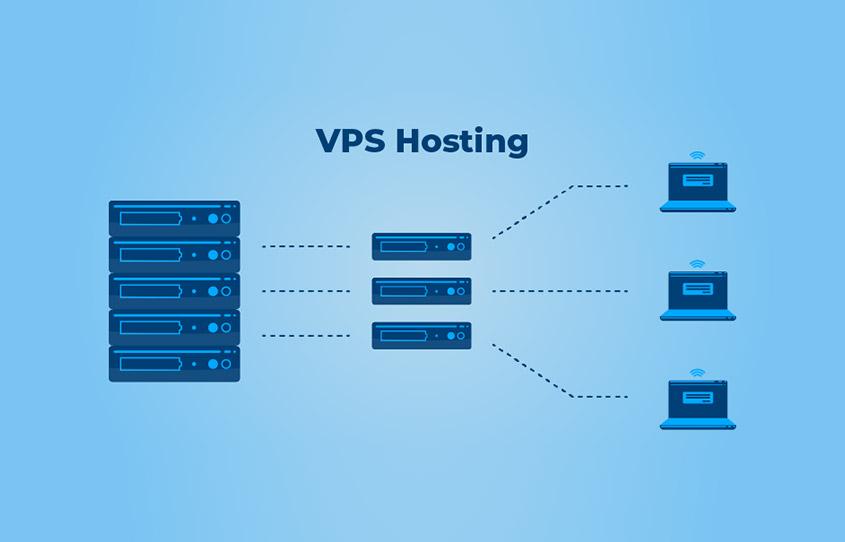As the digital landscape evolves, businesses and websites often face the challenge of managing increasing traffic without compromising performance. Leveraging Virtual Private Server (VPS) hosting can be a strategic move to ensure scalability, reliability, and performance. This article explores effective strategies for scaling high-traffic websites using VPS hosting, with a focus on the South Korean context.
Understanding VPS Hosting
A Virtual Private Server (VPS) is a virtualized server that mimics a dedicated server environment within a shared hosting infrastructure. Unlike traditional shared hosting, VPS provides dedicated resources such as CPU, RAM, and storage, ensuring better performance and control. VPS hosting in Korea is particularly beneficial for high-traffic websites due to its scalability, flexibility, and cost-effectiveness.
The Importance of Scaling for High-Traffic Websites
Scaling is crucial for high-traffic websites to maintain optimal performance, user experience, and uptime. Without proper scaling, websites can experience slow loading times, crashes, and downtime during traffic surges, leading to lost revenue and diminished user satisfaction. Key scaling strategies include:
Vertical Scaling (Scaling Up): Increasing the resources of a single VPS, such as upgrading the CPU, RAM, or storage.
Horizontal Scaling (Scaling Out): Adding more VPS instances to distribute the load across multiple servers.
Key Strategies for Scaling with VPS Hosting
Load Balancing
Load balancing distributes incoming traffic across multiple servers, preventing any single server from becoming overwhelmed. Implementing a load balancer ensures high availability and reliability, especially during peak traffic periods. Popular load balancers include Nginx, HAProxy, and cloud-based solutions like Amazon Elastic Load Balancing (ELB).
Auto-Scaling
Auto-scaling automatically adjusts the number of active VPS instances based on real-time traffic demands. This approach ensures that resources are available when needed and conserved during low-traffic periods. Cloud providers like Amazon Web Services (AWS), Google Cloud Platform (GCP), and Microsoft Azure offer robust auto-scaling features.
Content Delivery Network (CDN) Integration
CDNs distribute website content across a global network of servers, reducing latency and improving load times for users, especially those in geographically distant locations. For South Korea, CDNs like Cloudflare, Akamai, and local providers such as KT CDN can significantly enhance performance.
Database Optimization
Optimizing databases is crucial for maintaining performance as traffic scales. Techniques include indexing, query optimization, and using caching mechanisms like Redis or Memcached. For high-traffic websites, consider distributed databases or database clustering to manage load efficiently.
Caching Strategies
Caching reduces the load on servers by storing copies of frequently accessed content. Implementing caching at various levels, such as browser caching, server-side caching (e.g., Varnish, Nginx), and application-level caching, can drastically improve performance.
Microservices Architecture
Breaking down a monolithic application into microservices allows individual components to be scaled independently. This architecture enhances flexibility, fault tolerance, and scalability. Containerization tools like Docker and orchestration platforms like Kubernetes are instrumental in managing microservices.
Monitoring and Analytics
Continuous monitoring and analytics are vital for proactive resource management and performance tuning. Tools like Prometheus, Grafana, and cloud-native monitoring solutions provide insights into server performance, traffic patterns, and potential bottlenecks.
Specific Considerations for VPS Hosting in South Korea
Local Data Centers
Hosting websites on VPS hosting providers with data centers in South Korea, such as Amazon Web Services (Seoul region), Naver Cloud Platform, and KT Cloud, ensures lower latency and better performance for local users.
Regulatory Compliance
Ensure that your hosting provider complies with local regulations regarding data privacy and security. South Korea has stringent laws on data protection, such as the Personal Information Protection Act (PIPA).
Network Infrastructure
South Korea boasts one of the fastest internet infrastructures globally. Leveraging local ISPs and network providers can further enhance website performance and user experience.
Choosing the Right VPS Provider
When selecting a VPS China or Korea provider for scaling high-traffic websites in South Korea, consider the following factors:
Performance and Reliability: Look for providers with high uptime guarantees and robust infrastructure.
Scalability Options: Ensure the provider supports both vertical and horizontal scaling.
Support and Services: Evaluate the level of customer support and additional services like managed hosting, security features, and backup solutions.
Pricing: Compare pricing models to find a provider that offers the best value for your specific needs.
Conclusion
Scaling high-traffic websites using VPS hosting requires a strategic approach that combines robust infrastructure, advanced technologies, and best practices tailored to the target market. For businesses targeting South Korea, leveraging local resources, regulatory compliance, and the country’s superior network infrastructure can significantly enhance website performance and user experience. By implementing effective scaling strategies, businesses can ensure their websites remain responsive, reliable, and capable of handling increasing traffic demands.


